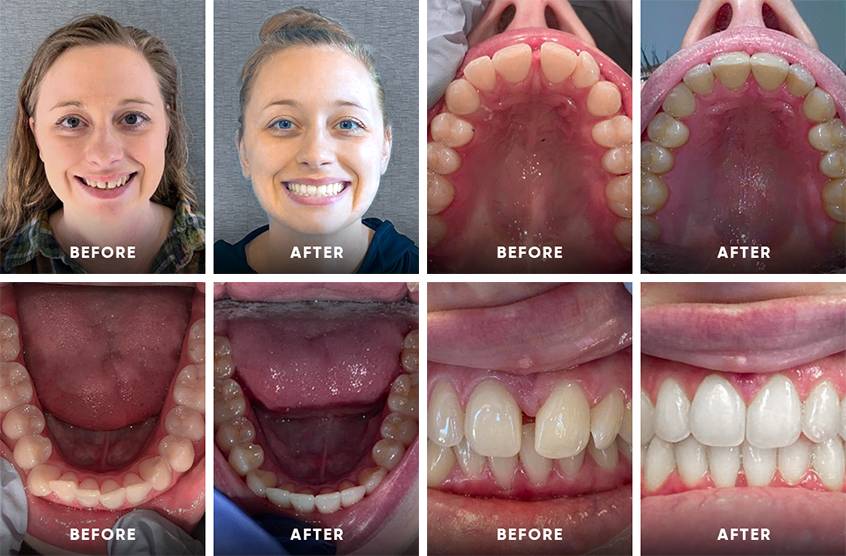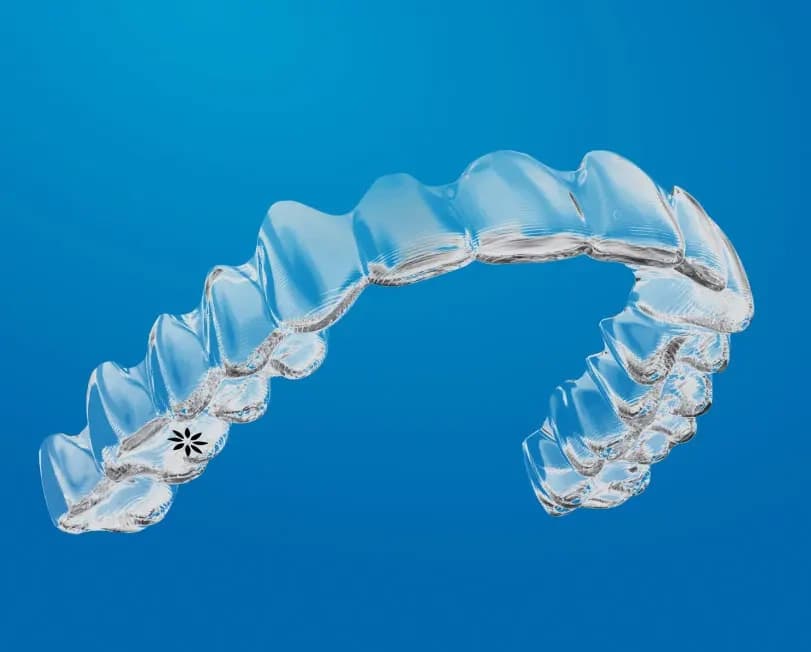Discover the Benefits of Invisalign for a Perfect Smile Improvement
Wiki Article
Invisalign vs. Standard Dental braces: Which Option Is Right for You?
When thinking about orthodontic treatment, the choice in between Invisalign and typical dental braces provides several important variables that warrant cautious assessment. Invisalign offers a very discreet choice with removable aligners, while traditional dental braces supply a much more visible yet reliable service for severe misalignment.Overview of Therapy Alternatives

In contrast, typical braces contain steel brackets and cables that are adhered to the teeth. This method applies constant stress over time to accomplish placement. While effective for complicated orthodontic concerns, typical braces need normal visits for modifications and can posture challenges in maintaining oral health as a result of the trouble of cleaning about brackets and cords.
Both options have their merits, and the selection frequently rests on details dental conditions, way of life preferences, and individual conformity. Eventually, seeking advice from an orthodontic specialist is important for determining one of the most suitable therapy plan tailored to specific requirements. Understanding the subtleties of each option can considerably affect the general success of orthodontic treatment.
Aesthetic Considerations
A considerable element affecting the option between Invisalign and traditional dental braces is the aesthetic appeal each therapy provides. Invisalign aligners are crafted from clear plastic, making them virtually unseen when used.In contrast, typical braces consist of steel brackets and cords, which can be much more noticeable. While innovations in orthodontic innovation have brought about the advancement of smaller braces and colored elastics, typical braces still keep a more obvious profile. For some individuals, the presence of braces may hinder them from seeking needed treatment.
Eventually, the choice between Invisalign and standard braces may rest on personal choices pertaining to visual appeals. Patients that focus on discretion often favor Invisalign, while those that are less worried about visibility might decide for conventional dental braces. Recognizing the aesthetic ramifications of each choice is crucial for making a notified choice that straightens with one's way of living and preferences.
Comfort and Convenience

In regards to ease, Invisalign aligners are detachable, allowing patients to appreciate their preferred foods without limitation and maintain optimum oral hygiene. Cleaning and flossing are simplified, as the aligners can be taken out throughout these routines, whereas traditional dental braces need careful steering around braces and wires.
In comparison, conventional braces demand routine changes, making them less convenient for those with hectic timetables. In general, the convenience and convenience of Invisalign make it an attractive selection for numerous individuals looking for orthodontic treatment.
Therapy Duration and Performance
While both Invisalign and traditional braces work in correcting dental imbalances, the duration of treatment can differ significantly between both alternatives. Typically, Invisalign treatment can take anywhere from 12 to 18 months, depending upon the intricacy of the case. The clear pop over to this site aligners work by slowly moving teeth right into their wanted positions, and regular follow-ups with an orthodontist assistance make certain progression remains on track.
On the other hand, conventional dental braces commonly call for a longer dedication, typically varying from 18 months to 3 years. This results from their set nature and using wires and brackets, which can be much more efficient for complicated cases and serious misalignments (Invisalign). The treatment efficiency of conventional braces is explanation well-documented, as they enable accurate adjustments and greater control over tooth movement
Ultimately, the choice in between Invisalign and typical dental braces may depend upon both the anticipated therapy period and the details oral problems at hand. Consulting with an orthodontist is essential, as they can offer tailored referrals based upon specific requirements, making sure the selected method straightens with preferred results and timeframes.
Expense Comparison and Insurance Alternatives
Expense plays a significant duty in the decision-making process for individuals considering orthodontic therapy, whether opting for Invisalign or traditional dental braces. On average, the price of Invisalign varieties from $3,000 to $8,000, while traditional braces commonly set you back between $2,000 and $6,000. Variables influencing these prices include the intricacy of the case, the period of treatment, and geographical area.Insurance insurance coverage can substantially impact out-of-pocket expenditures. Many oral insurance plans supply partial coverage for orthodontic therapies, but the specifics can differ extensively. It is important for patients to examine their insurance policies to establish the extent of protection for either option. Usually, traditional braces might be more regularly covered by insurance strategies compared to Invisalign, which some insurance firms categorize as a cosmetic procedure.
Furthermore, a number of orthodontic techniques supply flexible payment plans, making both treatment choices much more easily accessible. People should ask about potential financing options and discounts for upfront payments. Assessing the total cost, including insurance benefits and payment strategies, is essential for making an informed decision Visit Your URL that straightens with both visual choices and budget plan considerations.

Final Thought
In summary, the choice between Invisalign and traditional braces pivots on numerous variables, consisting of visual preferences, comfort, treatment period, and price. Invisalign supplies a very discreet, removable option that helps with oral health and nutritional versatility, while conventional braces might be preferable for complicated dental concerns and usually come with a lower price factor. Eventually, assessment with an orthodontist is important to assess specific scenarios and identify the most ideal treatment option for attaining ideal dental placement.When thinking about orthodontic treatment, the selection between Invisalign and typical dental braces presents several crucial elements that warrant cautious evaluation.Contrasting Invisalign and conventional dental braces reveals distinctive treatment alternatives for orthodontic adjustment.While both Invisalign and traditional dental braces are effective in remedying dental misalignments, the period of treatment can differ considerably in between the two choices.Cost plays a considerable duty in the decision-making process for people considering orthodontic treatment, whether deciding for Invisalign or conventional dental braces.In recap, the option in between Invisalign and traditional braces pivots on numerous elements, consisting of visual preferences, comfort, therapy period, and price.
Report this wiki page